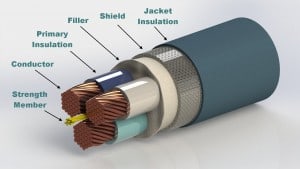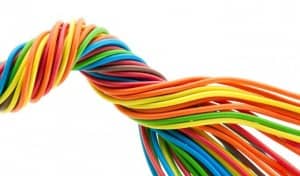It can be difficult to in that your cable manufacturer offers and which ones will be best for assessing your product.
Your guide to understanding the quality assurance testing options offered by your cable assembly manufacturer.
Despite the effort and planning involved in developing and designing wiring products, no wiring system is ever truly tested until it is placed in real-world scenarios. This is because it is so difficult to assess the way that a wiring system will actually work when put to the test and used with another highly specific product or machine. The type of testing that your custom cable will need to endure depends on several factors such as the product that it will be housed in, the cable or wire’s function, and how it will be handled on the job.
Here are some of the common Wire Testing Techniques that are used for testing materials:
Wire Testing Technique #1: Advanced Life Testing Labs

Wire Testing Techniques for Your Cable Assembly
Advanced life testing labs are designed to put your custom assemblies and custom cable through rough conditions to see how durable they are while in use. This testing system can be as simple as attaching weights to the wire’s connectors or terminals to gain a sense of the wire’s strength, to more advanced testing designed to assess how the assembly might react to real world use. This type of testing is designed to provide you with an idea of the amount of wear and tear that the final product will be able to handle to determine if any adjustments need to be made prior to large-scale manufacturing. Advanced life testing is particularly common with coiled cords which tend to encounter stress resulting from over-stretching more than traditional cords.
Wire Testing Technique #2: Tensile Strength Testing
Tensile strength is the amount of force that a wire or cable can withstand before breaking. This is necessary for wires and cables that will be used in heavy duty industrial projects and are likely to be handled roughly. One way of testing tensile strength is to conduct pull testing. Pull testing applies force to both ends of the wiring system to determine how much force the wire can endure before losing its functionality. This may be a useful test to consider if your product will be in a rugged environment or will be used in a mechanism that will require it to withstand force or tugging.
Wire Testing Technique #3: Cycles to Failure Testing
Different types of cycles to failure testing can be performed depending on your custom wiring needs such as the product’s intended lifespan, if replacement parts are feasible for this product, if the product will encounter any chemicals, and any additional machinery the product will be exposed to. This type of testing is so beneficial because it can be used to determine how many times a cord can be stretched before breaking, how many times it can withstand weight or force being applied to it, or simply how many times a coiled cord can be pulled and recoil before it begins to lose functionality. This type of testing can also be used to benchmark products and then test subsequent revisions to gauge how much improvement is gained through design changes.
Wire Testing Technique #4: Testing the Cable’s Jacketing Material
This is another important factor to consider when determining if the cable or wire that has been produced will be able to withstand the unique conditions that your product must function in. This can be tested through the use of prototypes to see how the product will function in real-world conditions. There are also mechanized ways to determine the jacketing’s flexibility to ensure that it will not begin to bend or crack while in use.
This type of flexibility testing becomes very specific, and there are even different types of tests that can be performed based on the type of motion that your specific product will encounter. The different types of motion that can be assessed include rolling flex movements, bending flex motions, and random motion. Ask your manufacturer and design team to help you assess your final product’s type of motion, if any, to ensure that the end product works as efficiently as possible. It’s important to assess whether or not your product can withstand the wear and tear that it will encounter before your team begins manufacturing custom cable assemblies, assembly cabling, and other wiring products on a large scale.
Conclusion
Ensuring that your wiring can withstand the various stresses that it will encounter throughout its lifespan, with minimal need for service and repair, is important to the reputation and longevity of your product. Taking the time to test these elements and make various prototypes may seem like it’s putting a drag on the production process; however, this attention to detail and rigorous testing will pay off in the long run, resulting in a product that is ideal for your industry.
